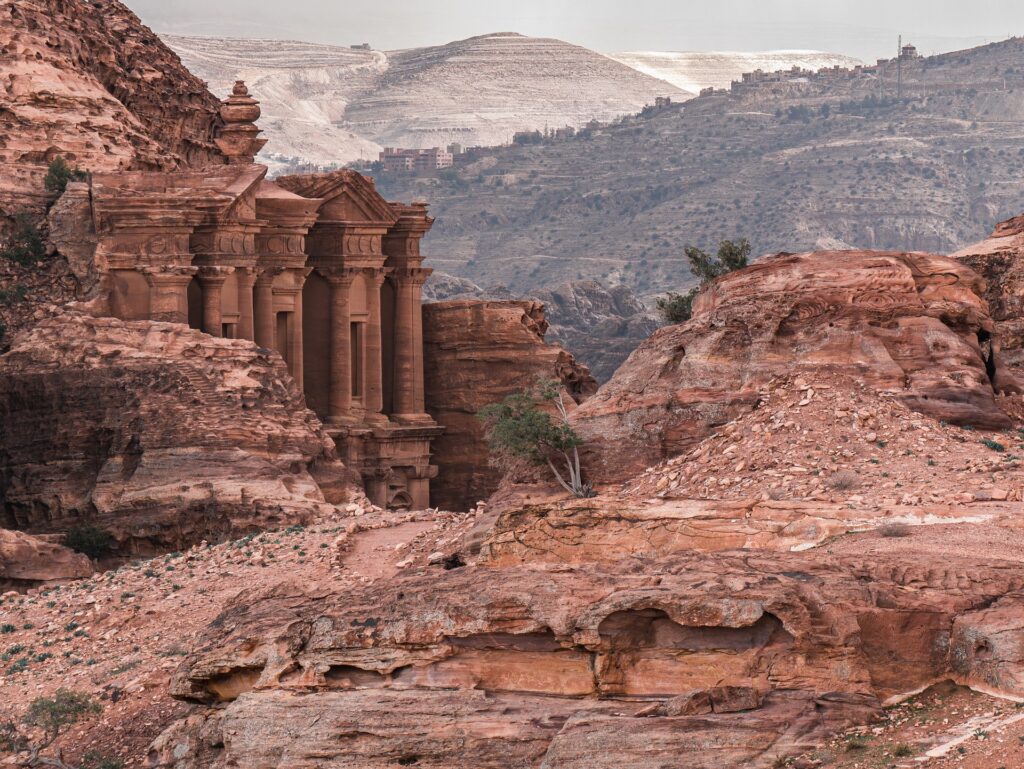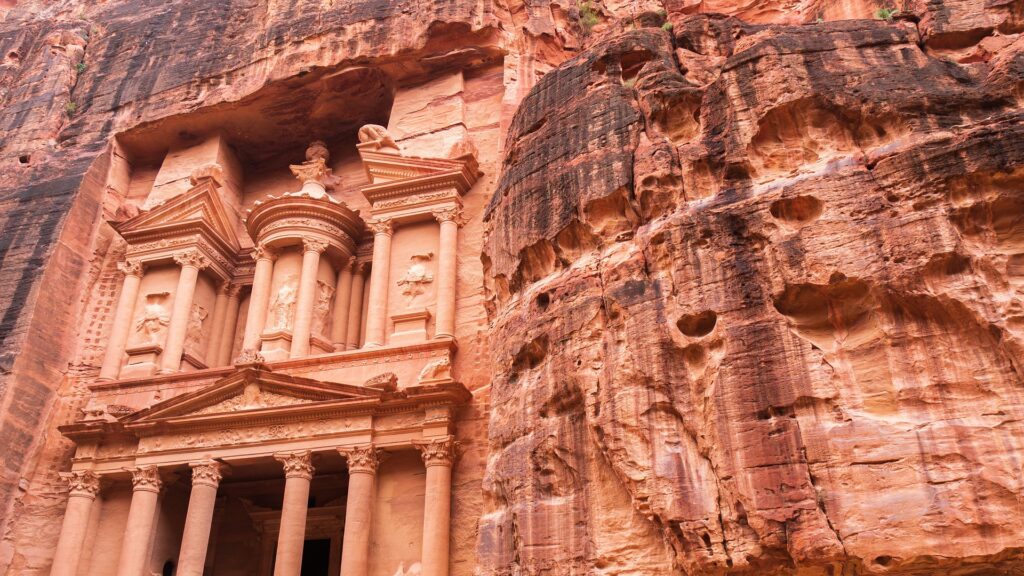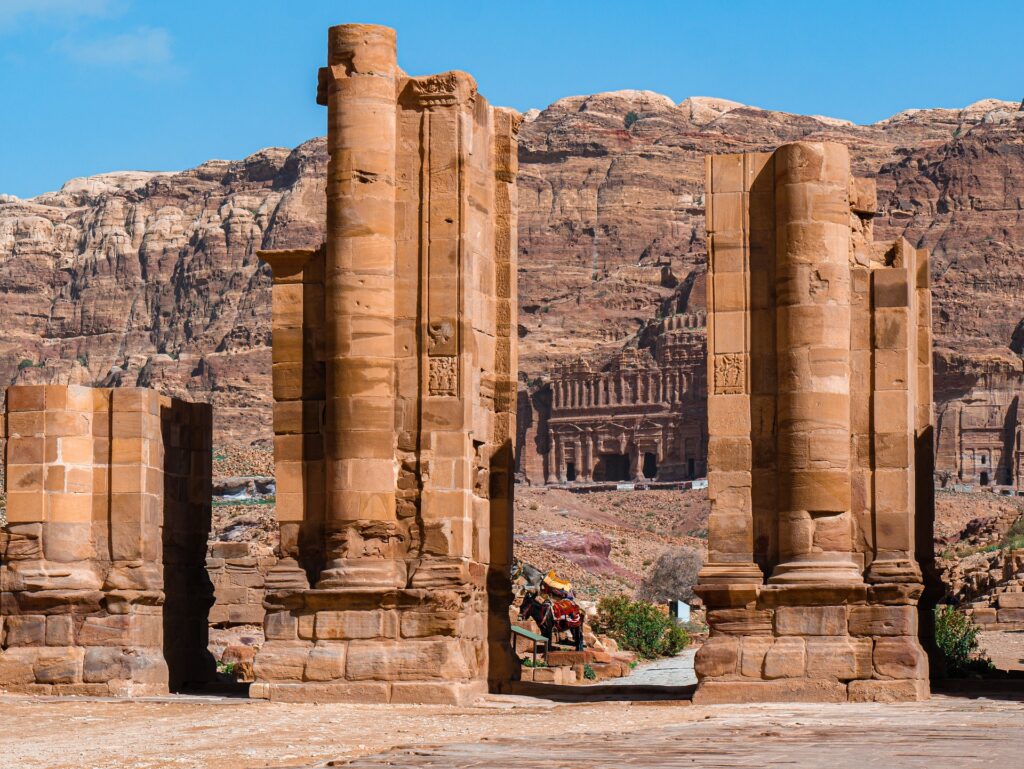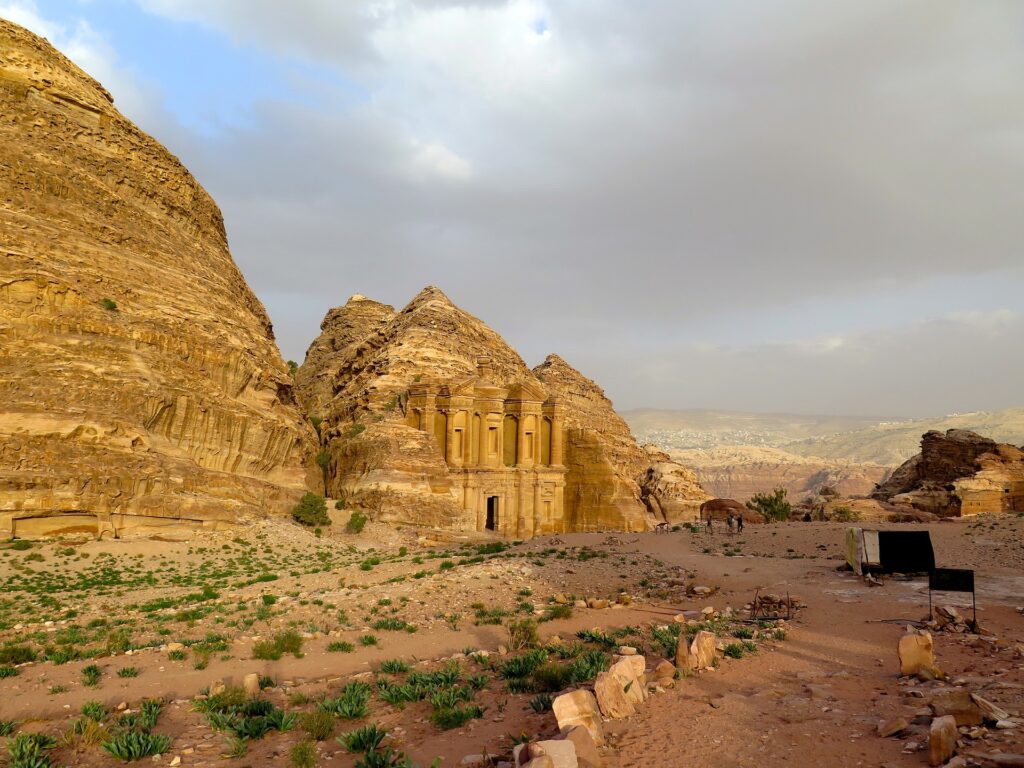Nestled in the rugged deserts of Jordan lies a hidden gem that has captivated travelers for centuries – Petra. This ancient city, carved into solid rock, is a stunning testament to the ingenuity and artistry of the ancient Nabateans who once called it home. From its impressive entrance through the narrow Siq canyon to its towering temples and tombs, Petra exudes an air of mystery and grandeur that is sure to leave visitors in awe.

The history of Petra dates back to around 312 BC when it was established as the capital of the Nabatean kingdom. Its strategic location on the ancient spice trade route made it a thriving center of commerce and culture, attracting merchants, traders, and travelers from far and wide. The city reached its peak of prosperity during the Roman Empire, with its unique architecture and engineering marvels drawing admiration from all who visited.
More:Read about on Koh Samui,Thailand: Experience Island Bliss and Pamper
One of the most iconic features of Petra is its entrance through the Siq, a narrow canyon that winds its way through the rock for over a kilometer before opening up to reveal the stunning Treasury building. This impressive structure, with its intricate carvings and towering facade, is just the beginning of the wonders that await within the ancient city.

As you continue through the winding streets of Petra, you will come across a myriad of tombs, temples, and other structures that showcase the skill and craftsmanship of the Nabateans. The Monastery, with its imposing facade and stunning views of the surrounding landscape, is a must-see for any visitor to Petra. The Royal Tombs, with their intricately carved facades and impressive size, offer a glimpse into the wealth and power of the city’s rulers.
visit here:Odishalifestyle
But it’s not just the monumental structures that make Petra a must-visit destination. The city is also home to a wealth of smaller, more intimate sites that offer a glimpse into daily life in ancient times. From the remains of marketplaces and residential areas to the intricate water systems that kept the city running, Petra is a treasure trove of historical and archaeological wonders waiting to be explored.

For those looking to delve deeper into the history of Petra, there are a number of guided tours available that offer insight into the city’s past and present. Expert guides can provide context and background information on the various sites within Petra, helping visitors to appreciate the significance of what they are seeing. There are also a number of museums and visitor centers within the city that offer exhibitions and information on the history and culture of Petra and its inhabitants.

Of course, no visit to Petra would be complete without taking in the breathtaking views of the surrounding desert landscape. The rugged mountains and valleys that surround the city offer a stark contrast to the carved rock of Petra itself, creating a dramatic and unforgettable backdrop for any visitor. Whether you choose to explore on foot, by horseback, or even by hot air balloon, the views from Petra are sure to take your breath away.

In conclusion, Petra is a truly unique and awe-inspiring destination that offers visitors the chance to step back in time and explore a world long lost to the sands of the desert. From its impressive entrance through the Siq to its towering temples and tombs, Petra is a testament to the skill and creativity of the ancient Nabateans who once called it home. Whether you’re a history buff, an architecture aficionado, or simply a curious traveler looking to discover something new, Petra is a destination that is sure to leave a lasting impression. So pack your bags, grab your camera, and prepare to be amazed by the ancient city carved into rock – Petra, Jordan.
FAQ For Petra, Jordan: Explore the Ancient City
What is Petra, Jordan?
Petra is an ancient archaeological site in Jordan, famous for its rock-cut architecture and water conduit system. It is one of the New Seven Wonders of the World.
How was Petra built?
Petra was built by the Nabateans, an ancient Arab tribe, around 312 BC. The city features impressive rock-cut structures, including the iconic Treasury and the Monastery.
How can I get to Petra?
Petra is located in southern Jordan, and the nearest major city is Amman. Visitors can reach Petra by car, bus, or organized tours. The closest airport is in Amman, around a 3-hour drive away.
What are the must-see attractions in Petra?
Some of the must-see attractions in Petra include the Treasury (Al-Khazneh), the Siq (narrow gorge entrance), the Monastery (Ad Deir), the Royal Tombs, and the High Place of Sacrifice.
How long does it take to explore Petra?
A full day is recommended to explore Petra thoroughly. However, if time is limited, it is still possible to see the main sites in a few hours.
Are there any guided tours available in Petra?
Yes, guided tours are available in Petra and can provide valuable insights into the history and significance of the site. It is recommended to book a tour in advance.
What should I wear when visiting Petra?
It is advisable to wear comfortable clothing and sturdy walking shoes when visiting Petra, as the site involves walking on uneven surfaces and climbing stairs.
Are there accommodations near Petra?
There are several hotels and guesthouses located near Petra, offering a range of accommodation options for visitors. It is recommended to book accommodation in advance, especially during peak tourist seasons.
What is the best time of year to visit Petra?
The best time to visit Petra is during the spring or autumn when the weather is milder. Summers can be very hot, while winters can be cold and rainy. Consider weather conditions and crowds when planning your visit to Petra.

